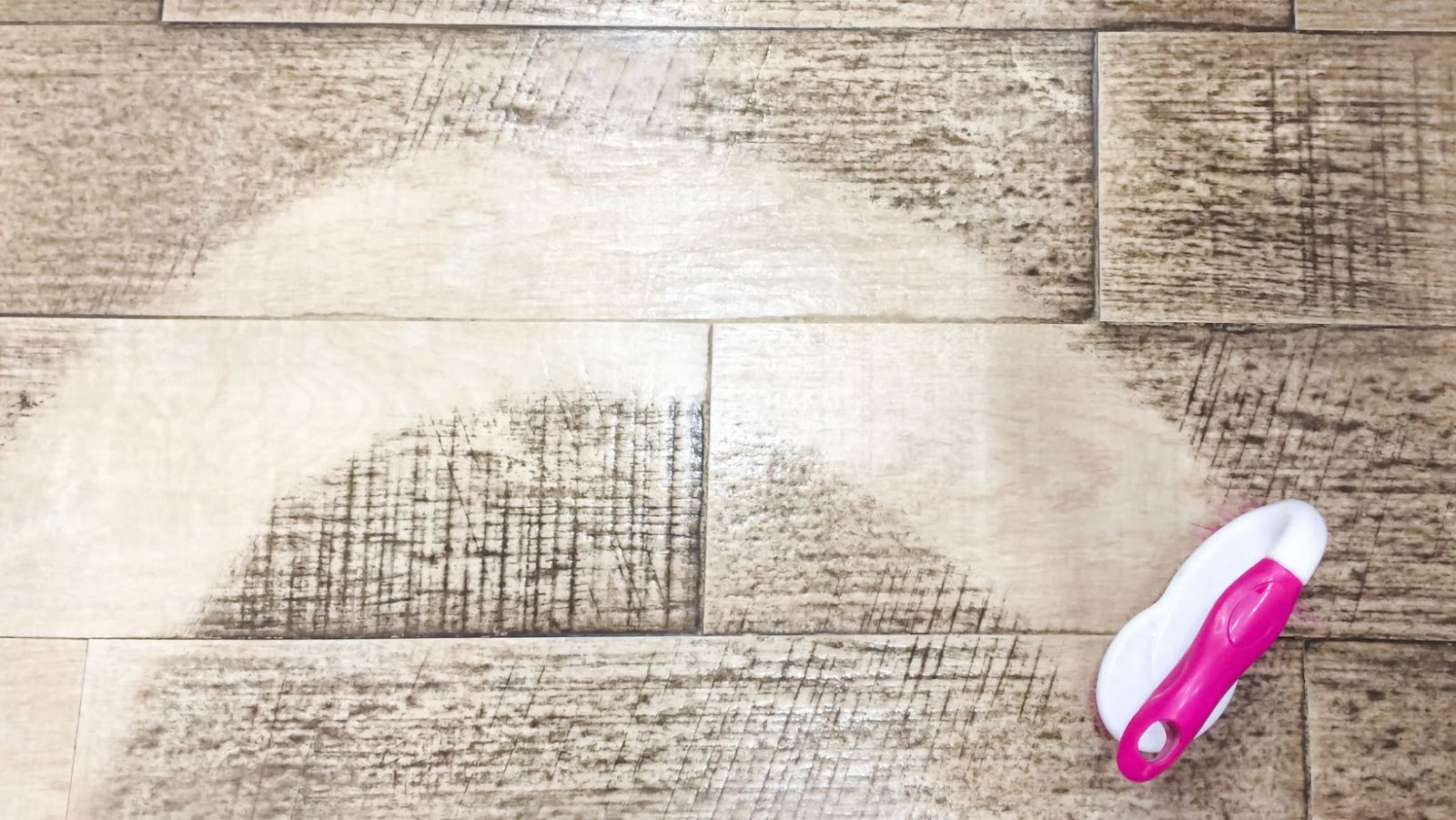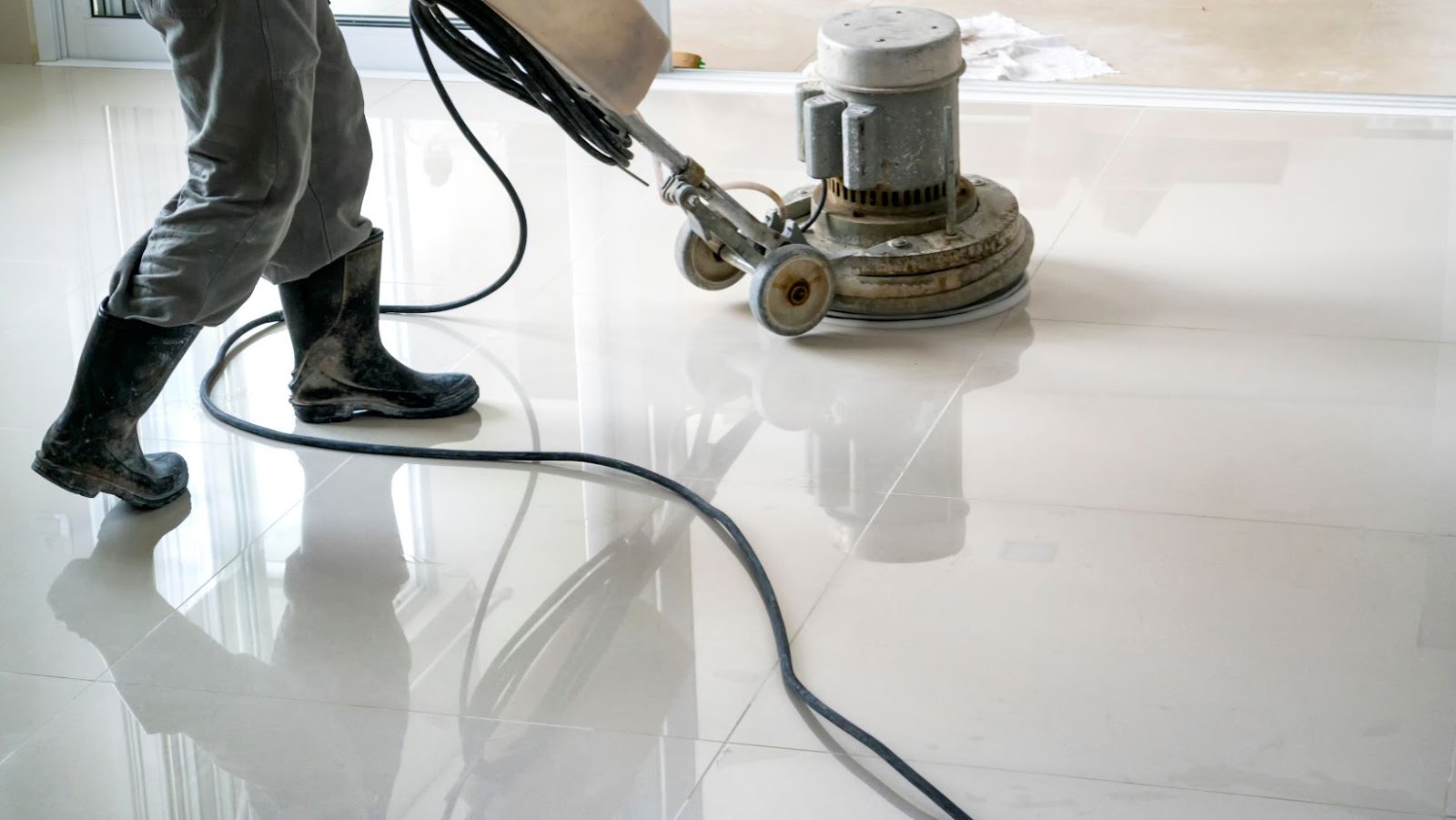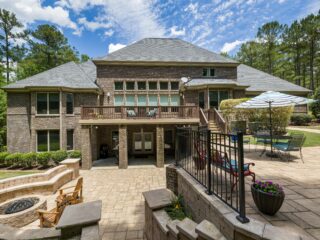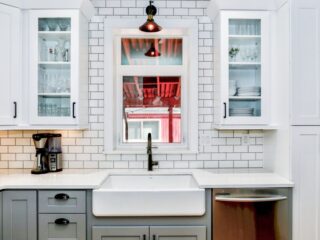
Brick flooring is a great option if you’re looking to add unique character and beauty to your home. Brick floors offer a variety of design options, are durable and can last for years with proper maintenance. In addition to the many choices available in brick tile, you can also choose from several types of brick. From softer mud brick to harder faces, each type will require different methods for best cleaning results. Understanding the different types of brick can help you select the best cleaning method for your brick flooring project.
Paver Brick
Paver brick is created by soft mud bricks that are dried under intense heat in a kiln before being cut into squares or rectangles and fired again during the manufacturing process. The resulting material forms attractive patterns when installed on walls or floors and is easier and cheaper than stones or tiles to maintain.
Hard-Faced Brick
Hard-faced brick uses an oxide glaze coating on a solid surface clay fired at high temperatures to make it stronger than regular cinder block bricks. It’s an excellent choice for creating sturdy surfaces indoors or out, particularly around pools and gardens since its strength resists wear by machinery, animal claws and weather elements such as wind.
The most important step in keeping your hard-faced brick floor looking like new is proper maintenance at least twice yearly depending on usage levels. Regular cleaning helps prevent dirt build-up which can deteriorate grout lines making them weaker and more prone to cracking over time which could eventually result in breaks forming on the face of the tile itself! To clean hard faced mortarless bricks use mild detergent like soap or dishwashing liquid then rinse with plain water using a mop dampened not wet enough for suds to be made as well as dried immediately with paper towels after mopping so no moisture is left behind in between tiles surfaces allowing mold/bacteria growths!
Types of Brick Flooring
Brick flooring is a classic and timeless look that adds a timeless elegance to any home. It can be used in many different ways, from subtle accents to bold statements. There are a variety of types of brick flooring to choose from, each with its own stylish look. From common clay brick flooring to antique brick flooring, let’s take a look at the different types of brick flooring and explore how to properly clean each.
Standard Brick Flooring
Standard Brick flooring is a durable and attractive option for many homes. It adds warmth, character, and timeless charm to any room. Standard Brick flooring is most commonly seen in Mediterranean, Colonial, and Spanish style homes. While standard Brick is an ideal choice for its beauty, versatility and durability, it comes with some challenges as well. Since standard Brick floors are naturally porous, they are more susceptible to stains from liquids or oils than other materials such as stone or ceramic tile. However, proper maintenance can prevent staining while still maintaining the authentic character that comes with a classic brick flooring installation.
Standard Brick flooring should be sealed before installation to ensure that liquid spills won’t soak into the surface of the material or cause discoloration over time. Once sealed properly and installed correctly with appropriate spacing between tiles or bricks to allow for movement when temperatures or climate fluctuate; brick floors will provide years of lasting appeal with minimal maintenance. Cleaning a brick floor is easy; sweeping regularly to remove dust and debris will help protect the sealant from becoming scratched or worn away too quickly. Occasional damp mopping using basic cleaning solutions such as mild soap-and-water cleansers should be done on a consistent basis in order to keep the surface free from dirt and grime buildup which could lead to permanent damage if neglected for too long of a period of time.
Reclaimed Brick Flooring
Reclaimed brick flooring can lend character and style to any space. Reclaimed bricks are salvaged from existing buildings and have been previously used in construction, meaning that each piece of brick has its own unique texture, shape, size, and color. Reclaimed brick flooring is highly durable and sturdy. It provides a classic look that complements any design aesthetic.
When installing reclaimed brick floors, there are certain installation tips that should be taken into consideration:
-Ensure adequate cleaning prior to using the reclaimed bricks – this will help ensure proper adhesion of the mortar to the bricks.
-Plan out where each component will go – it can be helpful to lay the bricks out on the floor before starting this project to help with visualization.
-Use wet mops on a regular basis – This will help keep your reclaimed bricks clean and looking fresh for years! Periodic sealing is also an option if desired.
-Consider using an acrylic sealer on your reclaimed brick flooring – this helps protect against stains, scratches, water damage and more for ultimate protection against wear-and-tear over time.
With proper care and maintenance, your reclaimed brick flooring will remain beautiful for many years!
Stained Brick Flooring
Stained brick flooring is created by applying a permanent or semi-transparent colorant to brick that is already installed. Colors are available in many shades, including beige, red, blue, green and black. Staining brick offers added protection and provides a more seamless look that ties together the surrounding decor. This type of flooring is also easier to clean than plain bricks because most stains are resistant to dirt and allergens.
When it comes to cleaning stained brick flooring, you need to first identify what type of staining product was used on the bricks. It’s important not to use a strong cleaner with an alkaline or acidic base as this could strip away the color from your floors. Vacuuming with a soft brush before sweeping is the best method for general cleaning of stained bricks. For more intense cleaning, lightly dampen the mop head with warm water and use an all-purpose cleaner specifically designed for wiping down stone surfaces such as unsealed bricks or stones. Avoid applying too much pressure while mopping as this could cause damage to your floors. You may also wish to invest in products specifically formulated for sealing stonework such as stamped concrete or brick flooring which can provide added protection against stains and spills over time.
Glazed Brick Flooring
Glazed brick flooring is a type of brick flooring that provides a highly-durable and waterproof finish. This type of brick flooring has an additional coating applied that helps protect it from damage while also giving the brick a sleeker and more modern look. Glazed brick flooring is often used in bathrooms, lobbies and entryways, since it’s impermeable to dirt and water. However, this type of floor requires extra care when being cleaned since the glaze can be damaged by certain harsh cleaning products.
To clean your glazed brick floors properly, begin sweeping them with a soft-bristled broom to remove dirt, debris and other particulates that may have found their way to the surface. When necessary, you can use a vacuum cleaner with adjustable suction control on hard surfaces or low carpet setting for heavier accumulations such as sand or pet hair. Next, you should mop your glazed floors using hot water or liquid soap specially designed for glass surfaces and follow with rinsing off the soapy residue that may be left behind from mopping. Ensure you dry up any remaining moisture from the area by using terry cloth towels before allowing foot traffic on the area again. To maintain its glossy finish for longer periods of time, you can even consider using impregnated fluid designed specifically for protecting this kind of terracotta tile product.
How to clean brick flooring
Brick flooring is a classic, yet timeless option for any home. But, with any type of flooring, it is necessary to keep it clean and properly maintained. In this section, we will cover all the cleaning instructions and maintenance tips you need to keep your brick flooring looking fresh and new. From cleaning instructions to the best products to use, we’ll cover all the aspects of brick flooring maintenance.
Regular Cleaning
Regular cleaning is essential in order to keep your brick flooring looking good and lasting for a long time. The best way to clean a brick floor is with warm water and a mild detergent like liquid soap. Just mix a small amount of detergent and warm water together, then scrub the area with a mop or soft-bristled brush. Rinse the area thoroughly and let it dry before walking on it.
For more difficult spots, such as grease or stained areas, use white vinegar or club soda to saturate the spot until it’s gone—once you’ve made sure that the spot is gone, rinse the area with warm water and dry it. Be careful not to use too much force while cleaning; excessive scrubbing can damage the surface of your brick flooring.
For regular maintenance, sweep or vacuum regularly in order to keep any dirt from settling into your bricks and grout lines — this will help preserve their appearance for years to come. Additionally, you can use a cleaner specifically designed for brick floors twice per year; make sure to follow manufacturer’s directions when doing so in order to avoid damaging your flooring in any way.
Deep Cleaning
In addition to your regular cleaning routine, brick floors should be deep-cleaned every 6 months or so. Choose an all-purpose cleaner that is safe for brick, such as a nonabrasive alkaline or neutral cleaner. For an even more thorough clean, you might choose to add a pH-neutral floor cleaner to your mixture. If it is safe for use on stone and marble floors, it should be gentle enough for a brick floor as well.
Be sure that the water temperature does not exceed 110 degrees Fahrenheit when cleaning the bricks with a mop and bucket of mild soap and warm water. Take extra care when scrubbing stubborn stains away, as abrasive brushes can easily damage the patina finish of aged bricks. After scrubbing, rinse well with clean water and dry with a lint free cloth.
If your bricks are glossy and have been chemically sealed by the manufacturer, chemical cleaners are available that can further protect the floor while removing dirt and debris with ease. However, if the chemical seal has worn away over time or was never applied properly in the first place —such as in cases where no sealer was used at all — chemical cleaners will only mildly enhance brightness and may cause further damage if used too often instead of simply relying on regular deep cleans performed with warm soap and water instead.
Sealing and Waxing
The best way to protect and prolong the life of brick flooring is to seal it. Applying a sealer will help prevent dirt and spills from penetrating the bricks, reducing staining and making maintenance easier. Wax may be applied as an additional layer of protection after sealing. If you choose to wax, use a hard paste wax formulated for brick floors. Avoid polishes, which can make the finish dull over time, and solid waxes, which may be too soft for high-traffic areas.
When applying wax or sealer to your brick floor, start in a corner and work in small sections; use a cotton cloth or sponge mop for even coverage. Be sure to follow the manufacturer’s instructions carefully when using any cleaning products on your floor because some cleaners can damage or discolor the bricks if used incorrectly. After cleaning, keep your brick floors in tiptop shape with regular dust mopping and damp mopping as needed; avoid allowing dust or grime to build up between cleanings as this can lead to scratches or streaks. For heavily soiled areas, it is best to spot clean with mild soap and water; never use abrasive cleaners on your brick flooring!
Conclusion
Brick flooring is a timeless and classic choice that can be installed in almost any room. Its natural texture and color makes it a great choice for many homes and commercial spaces. Despite its hard wearing surface, brick floors will still need special care and attention to keep them looking their best.
Regular sweeping and occasional mopping with mild detergent will help keep brick floors free from dirt, dust, and grime build-up. For harder-to-remove deposits, you may need to use special cleaning products designed for brick surfaces. When cleaning, take extra precautions not to use harsh detergents that may cause discoloration or other damage to the bricks’ surface.
For more serious issues, it may be necessary to have your bricks professionally sealed or refinished in order to prevent staining or too much wear and tear. With just a little extra attention and care, you can ensure that your brick flooring maintains its charm for years to come!







